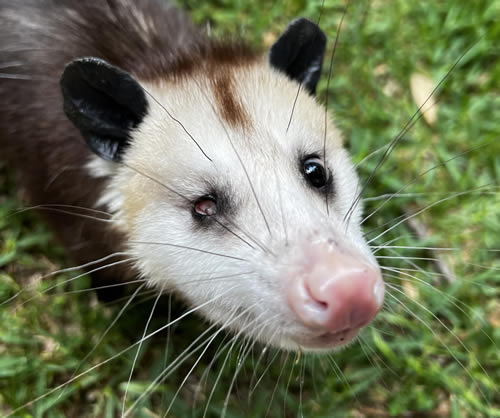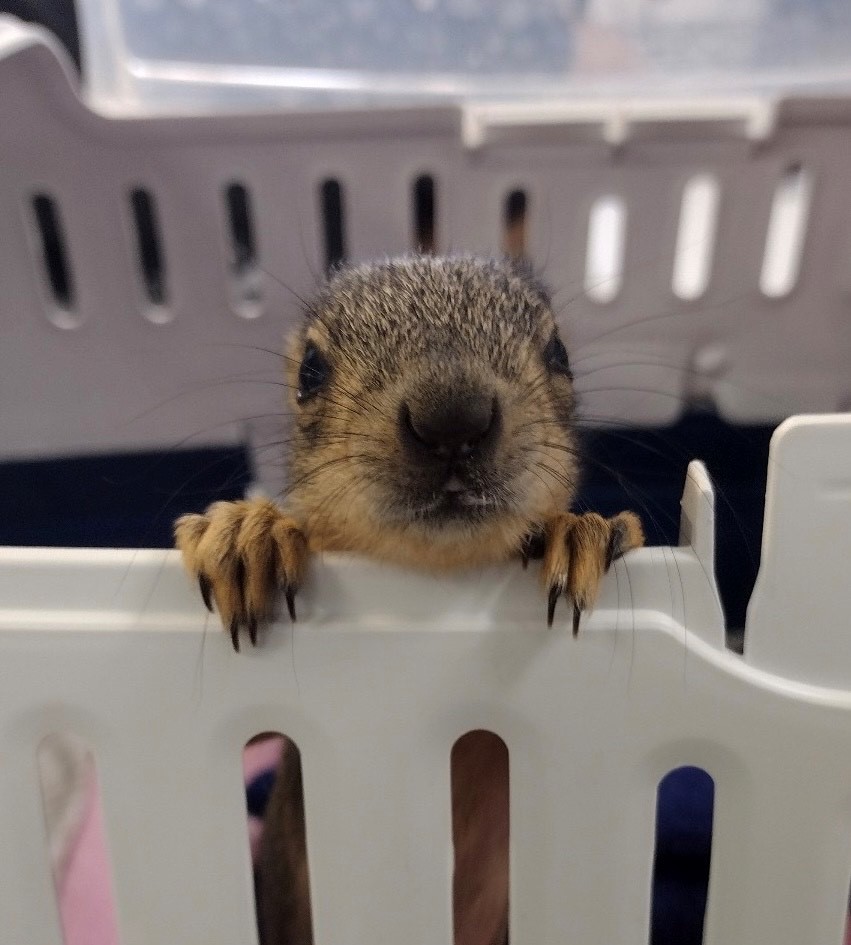Have you found a BABY Heron/Egret?
Please do not attempt to reunite the baby if any of the following apply:
- Caught by a cat or dog
- Visibly injured
- Limping or dragging a limb
- Lethargic (stays in one area for long periods of time)
- Covered in ants or flies
- Found in an unsafe area (ex: a parking lot with no green space around)
- Nestling (completely downs or has pin feathers & down) and cannot be put back in the original nest
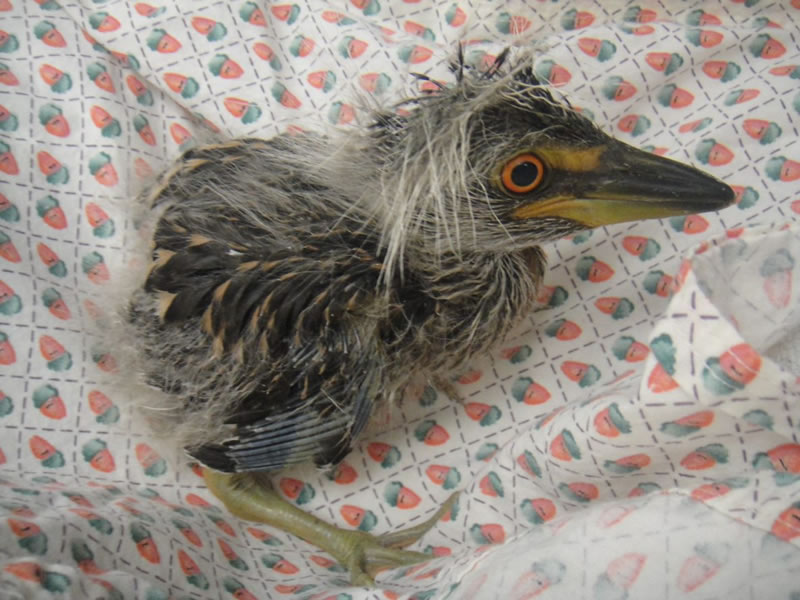
If any of the above apply, please call us at 713-468-8972 to schedule an appointment to bring in the bird. If we are closed, leave a voicemail and follow the Temporary Care Instructions below.
If the nestling heron or egret is able to be reunited with its parents, and none of the above conditions apply, please follow the instructions below.
Reuniting Nestling Instructions:
- Identify the nest the chick came from and ensure there is a safe way to reach the nest.
- Use a ladder or step stool to reach the nest.
- Gently place the nestling back in the nest. We suggest using gloves or a towel to handle the nestling.
- Go inside and monitor from a window, or back far enough away so that you do not prevent the mom from coming to the bird.
- If the mother comes to the baby, the bird is being cared for and no further action is needed. You can also look for food scraps that would be left behind or other evidence of parental care after a few hours of watching.
- If there is no evidence that the parent is caring for the baby, give us a call at 713-468-8972. If we are closed, leave a voicemail and follow the Temporary Care Instructions below.
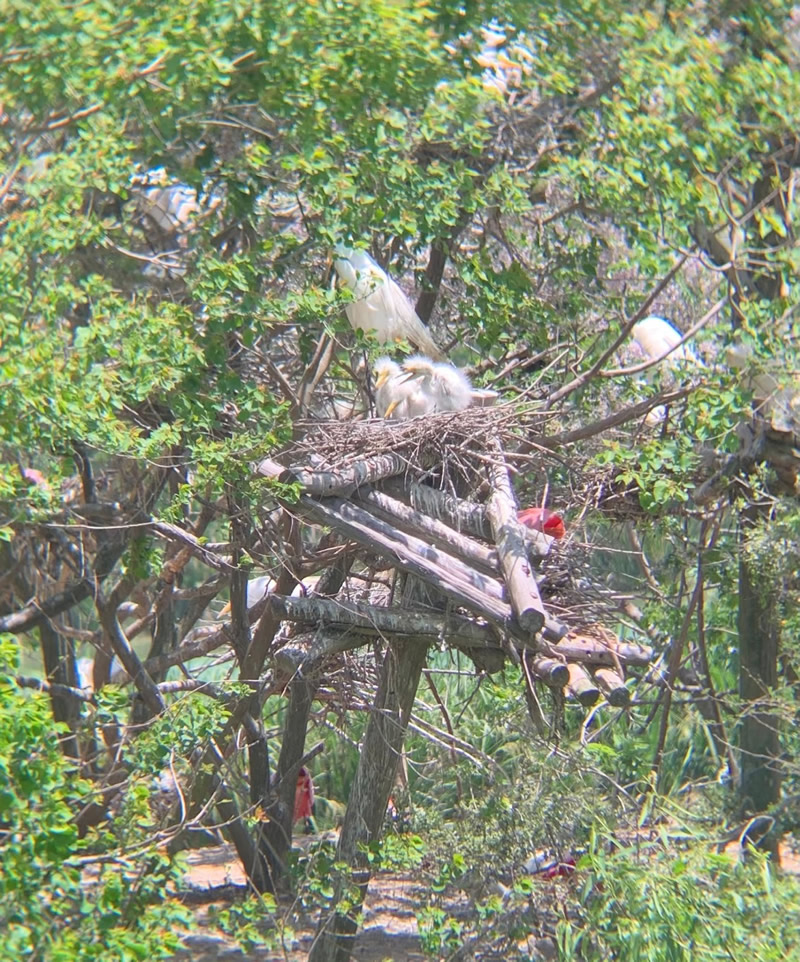
Have you found an OLDER BABY heron or egret?
If it is not a nestling and is instead a healthy fledgling or juvenile walking around the area, you can attempt to reunite it with its parents using the branching up method.
Reuniting Fledgling Instructions:
- Once it is verified a parent is in a tree nearby, place the fledgling in the same tree as the parents on the lowest branch.
- After being placed in the crook of the branch where it meets the trunk, the fledgling can then flutter up and hop higher in the tree towards the parents.
- Please closely monitor to ensure the fledgling can branch up to the parents.
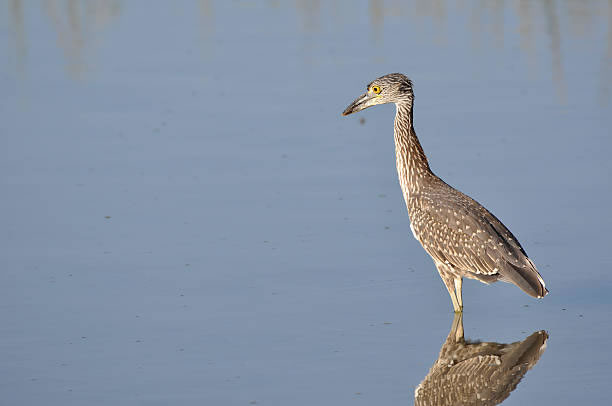
If the fledgling is found on the ground a second time please give us a call at 713-468-8972. If we are closed, leave a voicemail and follow the Temporary Care Instructions below.
Have you found an ILL or INJURED adult heron or egret?
If you find an aquatic bird of any age that is:
- Caught by a cat or dog
- Visibly injured
- Unable to walk
- Limping or dragging a limb
- Lethargic
- Covered in ants or flies
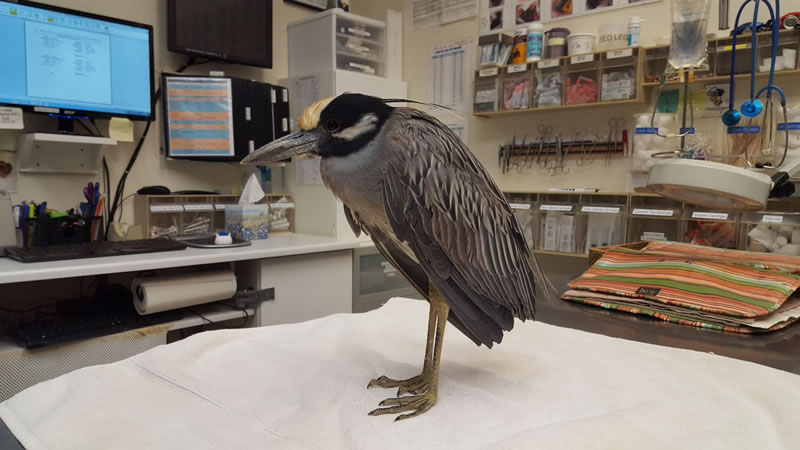
Please contact us at 713-468-8972 as soon as possible to determine further steps. If we are closed, leave a voicemail and follow the Temporary Care Instructions below.
Temporary Care Instructions for ALL Animals:
- Houston Humane Society Wildlife Center (HHS Wildlife Center) recommends that you wear gloves or use a cloth barrier when handling wildlife.
- Prepare an appropriate-sized cardboard box by poking air holes in the top and placing a soft cloth (T-Shirt, towel, paper towels) in the bottom. DO NOT put the animal into a plastic bag.
- Place the animal into the prepared box and tape the box shut. For injured adults, place the box on its side next to the animal and use a stick, broom, or rolled-up newspaper to gently push the animal into the box.
- Do not give the animal any food or liquids. Feeding an animal an incorrect diet can result in injury or death. In addition, rescued animals can get wet from liquids and become hypothermic and/or spill food on their fur/feathers, potentially causing damage.
- Keep the animal in a warm, dark, quiet place. Darkness makes the animal feel more secure. If the animal is a baby, the box can be placed half on and half off a heating pad set on low. If the animal gets too warm it will move to the other end of the box. Do not place adult animals on a heating pad.
- Leave the animal alone. Human noise, touch, and eye contact are very stressful to wild animals and can result in shock or even death. This is especially important in the case of injured or adult animals.
- If an animal has been caught by a cat or dog, please call HHS Wildlife Center immediately at 713-468-8972. Even if wounds are not visible, the animal needs medical intervention as soon as possible.
- Keep children and pets away. BE CAREFUL! An animal that is hurt or frightened may bite.
- Call HHS Wildlife Center at 713-468-8972 as soon as possible!
General information about herons and egrets in the Houston Area
There are many kinds of herons and egrets in the Houston area. The most common species admitted to the HHS Wildlife Center is yellow-crowned night herons (Nyctanassa violacea). Despite being called night herons, these birds will forage during both the day and night time. Yellow-crowned night herons have been around for a long time, and show up in the fossil record dating back 2-2.5 million years ago. The oldest was banded in Mexico and lived to be over 6 years old. Some other species in the area are great egrets (Ardea alba), cattle egrets (Bubulcus ibis), reddish egrets (Egretta rufescens), little blue herons (Egretta caerulea), great blue herons (Ardea herodias), green herons (Butorides virescens), and black-crowned night herons (Nycticorax nycticorax). These birds are related to other wetland species like the roseate spoonbill (Platalea ajaja) and ibises. Most aquatic birds breed during the spring and summer months. They can be found in huge rookeries most commonly in April.

